Roman Easter Sweet Bread
Roman Easter sweet bread, also known as “Panettone di Pasqua” in Italian, is a traditional Easter bread from the Lazio region of Italy, mainly served for breakfast or brunch. It is a sweet, fragrant bread that is shaped into a tall round loaf.

The ingredients used in Roman Easter sweet bread are simple, but the result is a deliciously fragrant and flavorful bread with a moist and tender crumb. The orange zest and other spices used in the recipe give the bread a wonderful aroma, while the sugar adds just the right amount of sweetness.
As far as food goes I firmly believe that Easter is just as important or even more important than Christmas in Italy. I actually prefer a Colomba rather than a Panettone, Italian Easter cookies are some of the best and of course I can’t forget Chocolate Easter Eggs!
This post may contain affiliate links. Please read my disclosure policy.
To make Roman Easter sweet bread, you will need the following ingredients:
- Flour – all purpose flour or Italian 0 flour
- Eggs – a large egg yolk and whole egg
- Milk – whole milk lukewarm
- Sugar – granulated sugar
- Butter – softened butter, if you use unsalted butter then increase the salt
- Yeast – active dry yeast
- Vanilla – vanilla extract
- Citrus zest – orange and lemon zest
- Rum – optional
- Salt
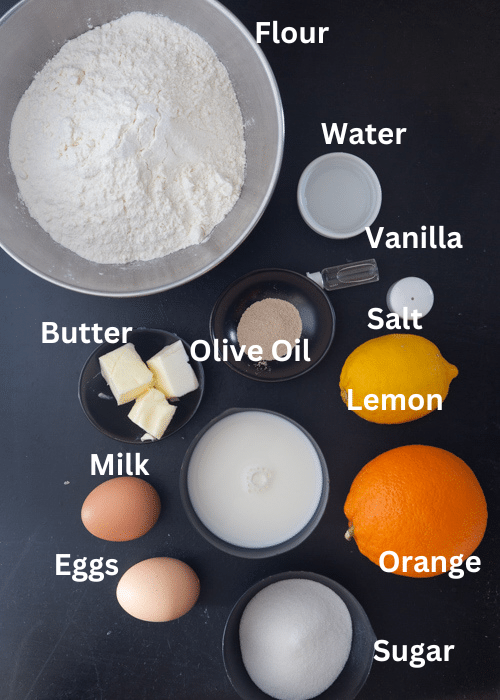
Optional
- Anise – anise seeds
- Cinnamon – ground cinnamon
Simple glaze
- Powdered sugar – also known a icing sugar or confectioners’ sugar
- Milk – you can use milk or water if you prefer
- Nonpareils – also known as 100s or 1000s
What temperature is lukewarm?
Lukewarm is considered between 105-110F (40-43C). Be aware that the yeast will die at a temperature over 140F (60C).
How to make a Roman Easter Bread recipe
In a small bowl add the milk, sprinkle the yeast on top. Let sit for 10 minutes, then stir to combine.
In a large bowl or stand mixer using the dough hook attachment, whisk the flour, zest, cinnamon and anise (if using), sugar and salt, add the eggs, butter, vanilla, rum and yeast mixture.
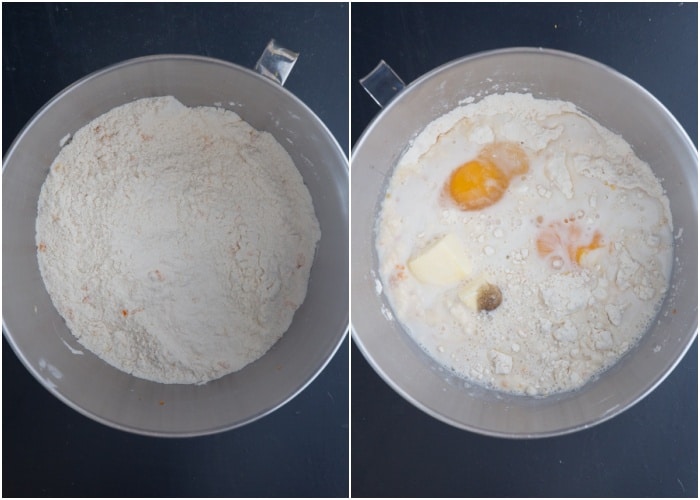
Knead until the dough is soft, smooth and elastic.
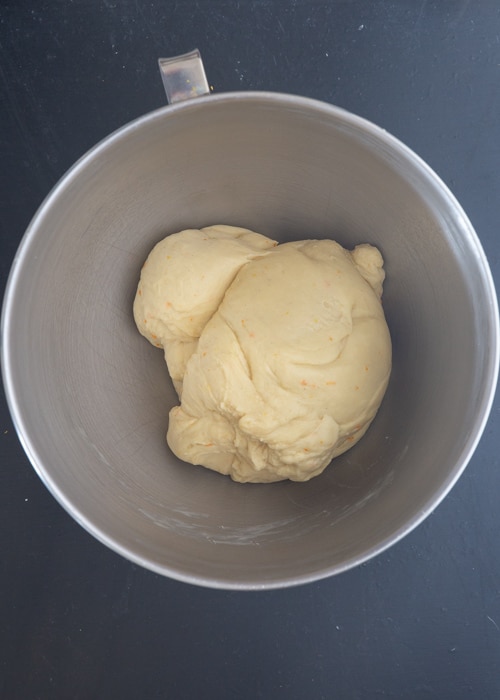
Move to a flat surface and form into a ball, place in a lightly greased bowl, cover and let rise in a warm, draft-free area until tripled in bulk.
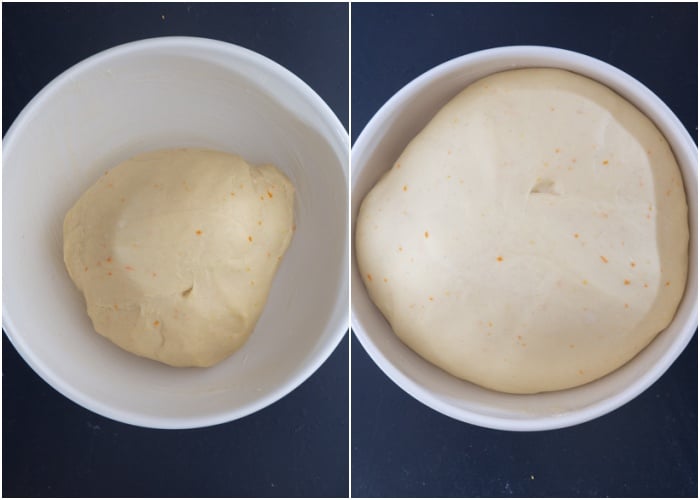
Move the dough to a lightly floured flat surface and pat it into a rectangle, fold the dough like an envelope then form it into a ball.

Place the dough ball in the prepared pan, cover and let rise until doubled in bulk.
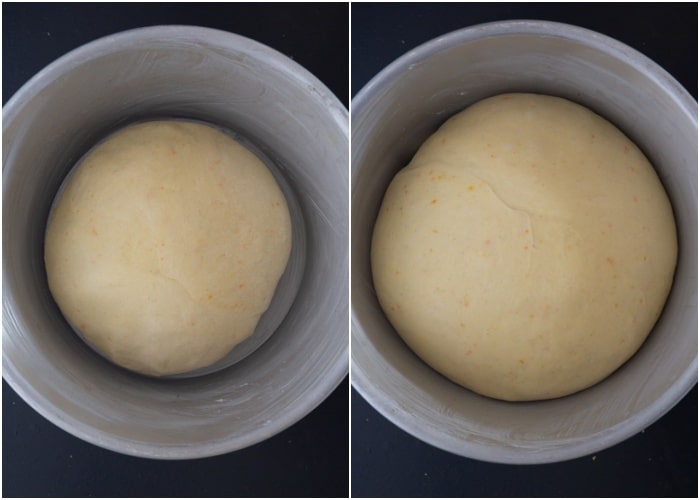
Bake in a pre-heated oven until the bread is golden brown and sounds hollow when tapped.
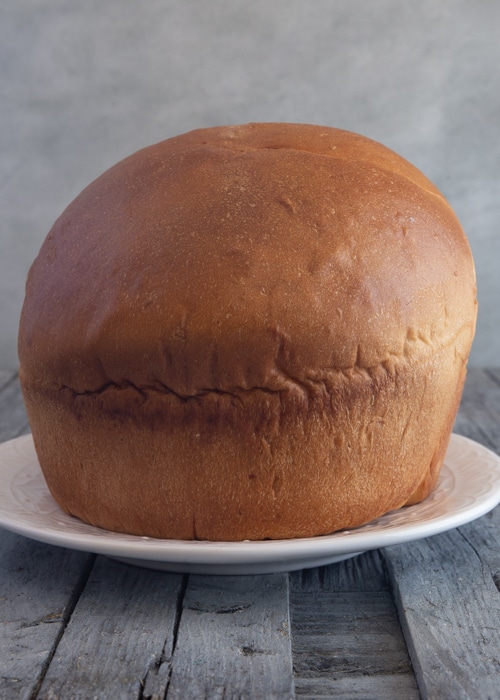
Let the bread cool in the pan, then move to a plate, drizzle with the glaze and sprinkle with nonpareils before serving.
How to make a simple glaze
In a small bowl add the sifted powdered sugar, stir in enough milk to make a thick glaze. I made mine on the thinner side although I think thicker would have been better.
Can the bread be made by hand?
Yes it certainly can and that is the way it is made most of the time. In a large mixing bowl whisk the dry ingredients, as stated above, then add the wet ingredients and combine with a fork or clean hands.
Transfer the dough to a lightly floured surface and knead for 10-15 minutes, or until the dough is smooth and elastic. Form into a ball.
Place the dough ball in a lightly greased bowl, cover and let rise in a warm, draft-free place for 2-3 hours, or until the dough has tripled in size. Then continue with the recipe as written.
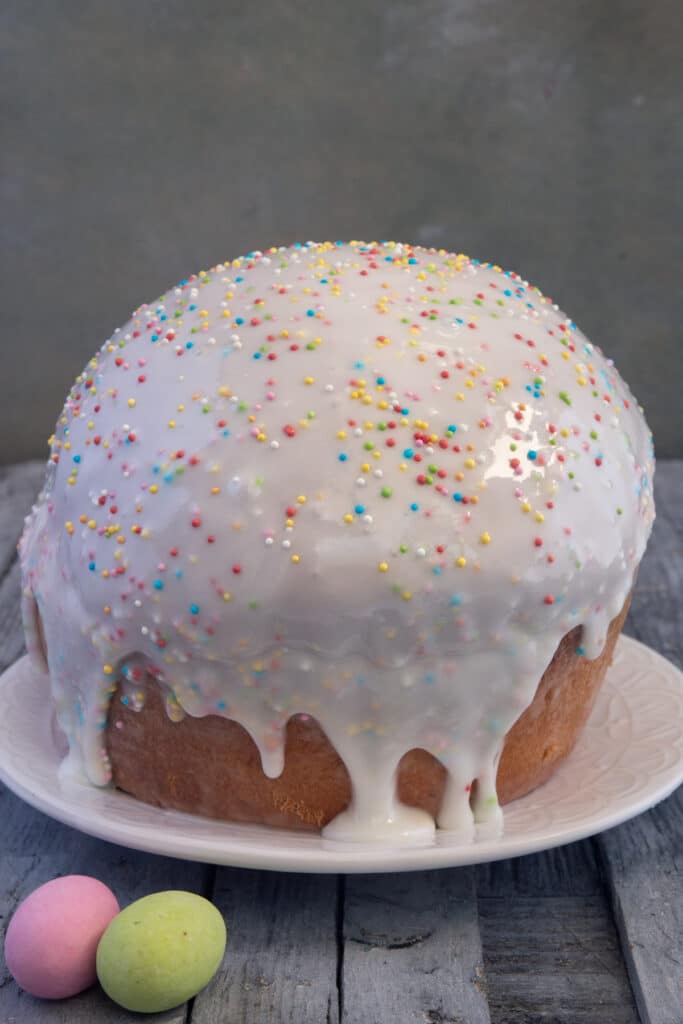
What is Roman Easter Bread?
Also known as a Sweet Easter Pizza it is a specialty of the Lazio Region in central Italy. The name might change, but basically it is the same type of preparation. It consists of a not too sweet leavened product, made with flour, eggs and butter, or lard, sugar and honey.
It is usually flavored in different ways, each town has its own customs. Usually citrus peel, cinnamon, cloves, anise liqueur, sambuca or even rum are used. It is a very simple bread, even in the presentation, the only garnish is a powdered sugar glaze, with colored nonpareils.
How to know when sweet bread is baked?
Carefully turn the bread upside down and give the bottom a tap, it should sound hollow. Or the best way to check is with a thermometer, check the center of the bread, for a soft and perfectly baked bread the temperature should be 190°F / 88C.
How to store the Italian Easter Bread
The baked cooled bread should be stored in an airtight plastic bag, and kept at room temperature, it will keep for up to 3-4 days if properly stored. It can also be frozen in a freezer safe bag or container. It will keep for two months in the freezer.

Roman Easter Sweet Bread is a delicious and meaningful Easter tradition in Italy. Whether you enjoy it as a breakfast treat or a dessert, I am sure your family and friends will like it too! So why not try making your own Roman Easter Bread this Easter season? Enjoy!
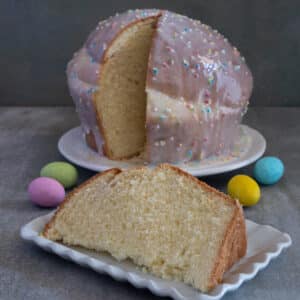
Roman Easter Sweet Bread
Equipment
- 1 large bowl
- 1 small bowl
Ingredients
- ⅔ cup + ¾ tablespoon milk – whole milk lukewarm (170 ml total)
- 1¼ teaspoon yeast
- 4 cups flour – all purpose or Italian 0 flour
- 1 tablespoon orange zest
- 1 tablespoon lemon zest
- ½ teaspoon cinnamon (optional)
- ⅓ cup + ¾ tablespoon granulate sugar (75 grams total)
- 1 pinch salt*
- 1 large egg
- 1 large egg yolk
- 3½ tablespoons butter softened
- 1 teaspoon vanilla extract
- 1 tablespoon rum
- ½-¾ teaspoon anise seeds (optional)
SIMPLE GLAZE
- 1-1½ cups powdered sugar (sifted)
- 2-3 tablespoons milk (more or less)
- 1-2 tablespoons nonpareils
Instructions
- In a small bowl add the milk, sprinkle the yeast on top. Let sit for 10 minutes, then stir to combine.
- In a large bowl or stand mixer using the dough hook attachment, whisk the flour, zest, cinnamon and anise (if using), sugar and salt, add the eggs, butter, vanilla, rum and yeast mixture.
- Knead the dough for 18-20 minutes, the dough will be soft, smooth and elastic. Move the dough to a flat surface and form into a ball, place in a lightly greased bowl, cover and let rise in a warm, draft-free area for 2-3 hours or tripled in bulk.
- Place the dough on a lightly floured flat surface and pat it into a rectangle, fold the dough like an envelope then form it into a ball.
- Place the dough ball in an 8×4 inch / 21x11cm round cake pan, cover and let rise 1-2 hours or until the dough has doubled in bulk.
- Pre-heat the oven to 340F/170C.
- Bake in the pre-heated oven for approximately 40-50 minutes, if after 35 minutes the top is browning too much then cover it like a tent with foil. The bread is done when it sounds hollow when tapped on the bottom, or better still the internal temperature is 190F/88C.
- Let the bread cool in the pan, then move to a plate, pour the glaze on the bread and sprinkle with nonpareils before serving.
SIMPLE GLAZE
- In a medium bowl add the sifted powdered sugar and slowly add the milk, mix together until you have a smooth thick glaze.
Hello, I made this recipe this am. I filled all of the recipe, the dough was extremely dry.
I added 2/3 cup more of water.
I hope this turns out excellent.
Hi Sally, it can depend on the type of flour you use, flours are different on absorbing liquid, so adding more was probably a good idea. Let me know how it goes.
Hello! This is by far the closest, I have seen, to my family’s traditional Easter bread my grandmother and great grandmother made. I have tried many times to replicate it with varying success. My grandmother’s recipe is similar but for 2 cups of flour, she adds 1 whole stick of butter and 8 eggs. She also made hers in a large pasta pot and it rose about 8inches and was flat on top. We didn’t glaze it, but incorporated flavors into the cake like orange, lemon, vanilla, anise and cinnamon. Do you think the ingredients are weighing mine down? Appreciate any help or insight !
Hi Lauren, check your emails. 🙂